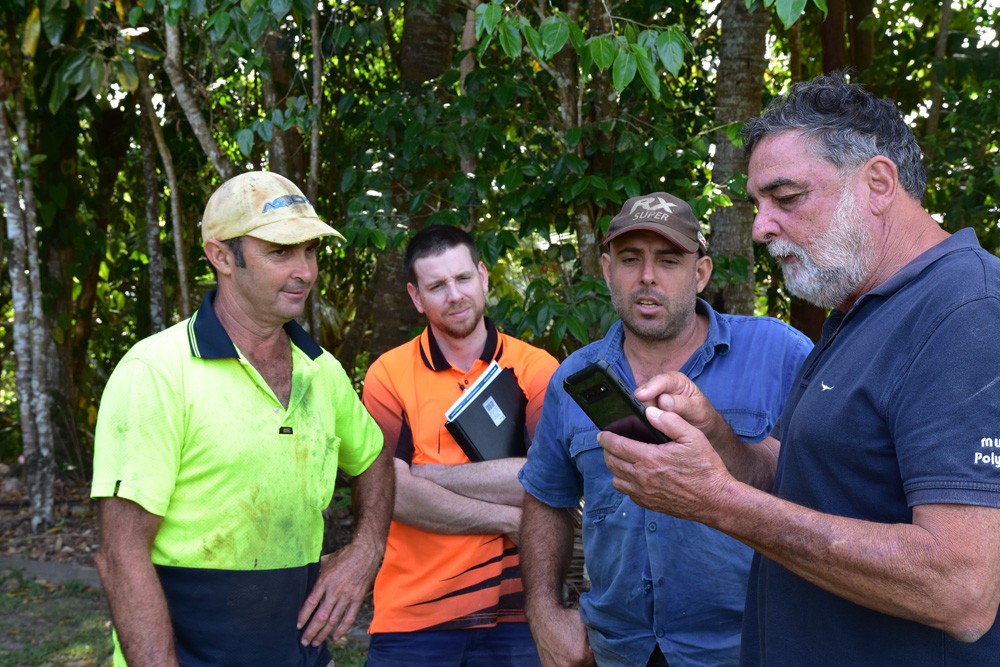On The Land
27 November, 2022
Instant Nitrogen analysis now possible for crops
North Queensland horticulturalists have a new tool available to help them comply with reef regulations, while optimising results from fertiliser application in an increasing range of broad acre, fruit and vegetable crops.

Haifa Australia has released a new smartphone app, Croptune, that gives growers instant and accurate analysis of their crops’ nitrogen levels, as well as fertiliser recommendations to address any deficiencies.
Israel’s Product Manager for Haifa, agronomist, Eldad Sokolowski, was at the South Johnstone DAF Experimental Station recently to launch their latest development in digital agritechnology.
“It is usually too late for a crop, by the time a problem is visible. There have been several systems developed to measure leaf chlorophyll, but unfortu-nately they all rely on the lengthy wait involved in sending samples to labora-tories,” Mr Sokolowski said.
“Croptune gives growers a Nitrogen analysis of their crops in real time. So far it has been calibrated to work with 18 field crop, vegetable and orchard species. including bananas, corn, cotton, potatoes, mandarins and avocadoes and will be available to sugar cane farmers early in 2023. It costs $20/yr per 50ha of orchard or per 100 ha of crop.”
A lot of time and money has been invested in the calibration of each crop. Multiple photos are taken throughout the growing season of each species.
These are then sent to our technical people for analysis and cross checked against corresponding lab results to confirm their accuracy.
A simple point and shoot will give the operator instant information on nutrient deficiencies and immediate nutrient recommendations to an 85 – 90 per cent accuracy level at each stage of crop growth.
For the grower, the system is quite straightforward. They enter a field name, a plant date, an emergence date, and a sowing rate into their phone to calculate the age of the plant and the number of plants per area to calculate N uptake.
Once the crop is established, it is then just a matter of taking 3-5 photos of each crop area, between 10am and 3pm and uploading them to the cloud. The app will respond immediately with a simple colour-coded light system.
A green light means N is adequate and should be maintained at current levels, extreme green means a slight reduction in application rate would be good, a yellow light indicates N is slightly below recommended levels and a red result indicates a deficiency that should have growers checking for problems in their system.
The app recognises the user’s phone number and all their data will be recorded on the Croptune website and can be exported to Excel. The system becomes more accurate and informative as more data is collected. It can track each plot’s history and whether N levels are increasing or declining.
Mr Sokolowski said while this “decision support system wouldn't replace an agronomist in the field, it would help farmers to see if they are getting the results they were aiming for. If the N reading comes back at over 3.5 (above reef regulations), then they would know to delay further fertiliser applications.
“We have actually saved money for a lot of our clients around the world using Croptune. New Zealand potato growers supplying PepsiCo were able to reduce their fertiliser costs by almost 30 per cent for the same yield, Indian wheat growers reduced their N use by 35kg/ha and carrot growers in Israel reduced their carbon emissions by 50kg/ha.”
Haifa, the leading supplier of water soluble fertilisers to the Australian market, is currently in the process of getting the app recognised as a “lab” in Israel, the first time anyone has tried to validate a non-chemical laboratory. Once achieved, this validation will transfer to Australia.
While the app is not suited to working with cattle pastures containing mixed swards, it would work with monoculture crops like oats and can be used with aerial photos taken from a drone or a plane.
In this period of excessive fertiliser costs, it has been described as a good tool for getting farmers back to using fertiliser, enabling them to see the damage being suffered by crops that haven’t been fertilised for six months or more


